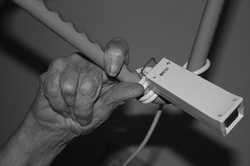
Fall alert systems that fail to operate properly can cause serious injury or death to the people they are supposed to protect. There are many types of personal emergency devices and individuals who use them depend on them to keep them safe. When design or manufacturing defects result in failure, individuals can pursue product liability claims against the manufacturer of the device.
Fall Alert Systems
Fall detection systems are designed to detect when the person wearing the device falls. Most are automatic and do not require the user to push a button to alert first responders of an emergency. These devices are essential for individuals who live alone and could fall and become incapacitated.
Faulty fall alert systems can delay the dispatch of medical personnel who could save the life of an individual suffering a stroke, heart attack, or another medical emergency. When the fall alert device fails to operate as designed, manufacturers are liable for any injury or death that results.
Common Causes of Fall Alert System Failures
Medical alert systems can fail for any number of reasons. The unit can become disconnected from the phone or internet. The phone lines or power could go down. The battery can run out, the unit can be damaged by water infiltration, or the system can malfunction because of software or wiring faults. It is also possible that the individual can travel outside of the range of the receiving base unit.
Falls Happen and Deaths Occur
Philips Lifeline’s systems have a history of failures that result in death. The company’s own estimates put efficacy rates at just 95%. This shows that the accelerometers, barometric sensors, and algorithms that are designed to control and trigger alerts are far from reliable. Individuals who trust their lives to these devices do so at considerable risk.
Class Action Lawsuits on the Horizon
Several class action lawsuits are starting to take shape against fall alert system manufacturers and service providers. These lawsuits are the result of poorly designed products, products that fail with routine use, and products that fail to operate as advertised. Many manufacturers of fall alert devices are aware of the flaws within their products, yet few have taken the time or exhausted the effort to correct deficiencies.

